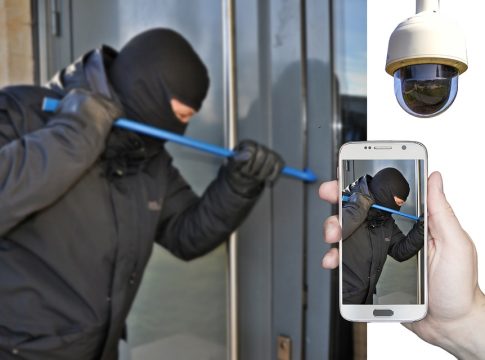The word "theft" often conjures up vivid images of masked intruders and gripping heists, but the reality is more complex. Understanding theft isn’t just an academic exercise; it impacts your personal safety, property, and even your peace of mind. Whether you’re a homeowner, a business owner, or simply someone wanting to protect their belongings, dispelling myths about theft can help you make informed decisions. Let’s dive into some common misconceptions and set the record straight to keep your world a little safer.
1. “Thieves Only Target High-Value Items”
One prevalent myth is that thieves only target valuable possessions like jewelry or expensive electronics. While it’s true that high-ticket items catch their eye, thieves are often more opportunistic than choosy. Everyday items like bicycles, tools, and even food can become prime targets, especially if left in plain sight.
Practical Advice: Protect your belongings by ensuring that even seemingly minor items are secured. Locking up your bike or covering your patio furniture can lower the odds of theft. Thieves are less likely to take the time to steal something that isn’t easily accessible.
2. “All Thieves Are Professional Criminals”
This myth assumes that every thief is a hardened criminal with expert skills. In reality, many thefts are committed by opportunists—first-time offenders or those in desperate situations who see a chance to take advantage of vulnerability.
Practical Advice: Understanding that not all thieves are seasoned professionals means recognizing that you can reduce risk through practical measures. Installing simple security features like motion-sensitive lights and easy home security systems can deter amateur criminals.
3. “Theft Only Happens in Bad Neighborhoods”
Another common misconception is that theft only occurs in areas perceived as dangerous. While crime rates do vary by location, no area is completely immune. According to recent 2025 statistics, even affluent neighborhoods have reported incidents of theft, often due to overconfidence in their safety.
Practical Advice: Always remain vigilant, no matter where you live. Secure your doors and windows, install security cameras, and consider neighborhood watch programs. Being proactive can make a considerable difference in preventing theft in any area.
4. “Insurance Covers Everything”
Many people believe that their insurance policy will cover all types of theft losses. While most policies offer some protection, there are often limitations and conditions that can catch people off guard. For instance, if you don’t have an inventory of what’s been stolen or if the items weren’t properly insured, you may face out-of-pocket expenses.
Practical Advice: Review your insurance policy carefully and consider adding additional coverage for high-value items. Keeping a detailed inventory, complete with photographs and receipts, will help you provide necessary proof in case of theft.
5. “I’ll Never Be a Victim of Theft”
This belief might come from a sense of invincibility or ignorance about the realities of theft. The unfortunate truth is that theft can happen to anyone, regardless of lifestyle or upbringing. Overconfidence often leads to complacency, making people easy targets.
Practical Advice: Implement a culture of security in your personal and business life. Educate yourself on theft prevention. Simple measures like always locking your car, avoiding leaving valuables in plain view, and varying your routines can greatly reduce your chance of becoming a victim.
Be Prepared, Not Paranoid
Understanding the myths surrounding theft is the first step toward effective prevention and assurance. Remember, these misconceptions can lead to complacency, which in turn can invite theft into your life.
Take control of your surroundings by arming yourself with knowledge and practical measures. By knowing what myths to avoid, you can create a safer environment for yourself and your community.
What experiences have you had when it comes to theft, or what precautions do you take to avoid it? Let us know in the comments!

Covers viral stories, pop culture, and breaking celebrity news.
Bio: Jamie has a sharp eye for what’s buzzing online, tracking social media trends and entertainment headlines around the clock.

